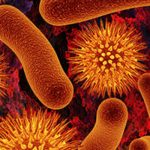 This course provides an overview of the principles and concepts of safe, secure, and successful biorisk management. The course focuses on fundamentals of biorisk management systems; CWA 15793 laboratory biorisk management; implementing a biorisk management system; and roles and responsibilities for biorisk management.
This course provides an overview of the principles and concepts of safe, secure, and successful biorisk management. The course focuses on fundamentals of biorisk management systems; CWA 15793 laboratory biorisk management; implementing a biorisk management system; and roles and responsibilities for biorisk management.
This course is based on the content outlined in the International Federation of Biosafety Associations (IFBA) certification exam guidelines for biorisk management and can be used as a study aid for people wishing to take that exam.
Course Learning Objectives
• Define relevant terms relating to biorisk management.
• Describe the fundamental elements of a biorisk management system and the steps and considerations to implement such a system.
• Evaluate biological hazards by establishing risk assessments and risk mitigation procedures.
• Explain how to develop and implement “operational”, “facility”, and “management” mitigation and control measures for biological risks.
• Identify individual roles and associated responsibilities within an organization.
• Discuss the background and components of the CEN Workshop Agreement 15973, and learn about the new ISO 35001 Standard.
Chapter 1
A. The meaning of the key terms used in biorisk management.
B. The importance of having a biorisk management system in place.
Chapter 2
A. The goals of an effective biorisk management system.
B. Identifying key factors in developing a successful biorisk management system.
C. The fundamental role of risk assessment and risk management in implementing a biorisk management system.
D. How to measure and monitor the performance of a biorisk management system.
E. The process of the PDCA (Plan-Do-Check-Act) principle and provide examples of how PDCA can be applied to a biorisk management system.
Chapter 3
A. Evaluating biological hazards and determining risks by using risk assessments.
B. Formulating site-specific risk mitigation procedures for biosafety and biosecurity risks.
C. Develop and implement “operational”, “facility”, and “management” mitigation and control measures for biological risks
D. Evaluate given examples of operational, facility and management mitigation and control measures and for each example, explain how the associated biological
risk could be reduced.
E. Identifying non-conformities with biorisk management systems.
F. Performance indicators and data generated from accident/incident investigations, inspections & auditing to monitor and improve a biorisk management system.
G. Establishing emergency response procedures.
H. Developing materials for the communication of relevant biorisk information.
I. How to control and maintain records, documents and data relevant to the biorisk management system.
Chapter 4
A. Individuals responsible for managing biological risks within an organization.
B. The roles, responsibilities and importance of top management, senior management, and scientific management.
C. The role and operation of a biorisk management committee.
D. The role and responsibilities of biorisk management advisor.
E. Identifying individuals responsible for monitoring performance and improving the biorisk management system.
F. How different roles interact with and influences biorisk management within an institution.
Chapter 5
A. Describe the ISO 35001 standard.
B. Define the terminology.
C. Identify fundamental components of the ISO 35001.
D. Describe how the ISO 35001 can be used to establish, maintain, review, and improve a biorisk management system.


